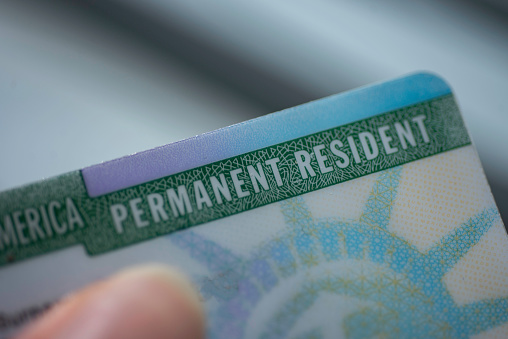Green Card Through Employment
 Every fiscal year (October 1 – September 30), the United States issues approximately 140,000 immigrant visas (green cards) to workers looking to call the U.S. their new permanent home. When employers are unable to find qualified employees in the United States to fill their job positions, they can turn to immigrant visas to fill their open jobs by “sponsoring” a foreign worker.
Every fiscal year (October 1 – September 30), the United States issues approximately 140,000 immigrant visas (green cards) to workers looking to call the U.S. their new permanent home. When employers are unable to find qualified employees in the United States to fill their job positions, they can turn to immigrant visas to fill their open jobs by “sponsoring” a foreign worker.
As expected, obtaining a green card through employment starts with an actual job offer from a U.S. employer. From there, it is the responsibility of the employer to start the immigration process with the Department of Labor to obtain a PERM Labor Certification. Approval of the PERM certification means the employer was unable to find qualified and available U.S. workers to fill the job position, is able to pay a prevailing wage to the foreign worker and will not adversely affect other similarly employed U.S. worker, among other factors.
In total, there are 5 employee preference categories (E-1, E-2, … E-5) that allow potential employees access to a green card. The categories of employment are comprehensive and may apply to individuals of advanced ability, outstanding professor or researcher, certain government employees, professionals with advanced degrees, skilled workers, and unskilled workers with less than 2 years of experience.
Most, but not all employment eligibility categories, require the PERM certification to apply for the green card process. Foreign applicants of outstanding qualifications in the first preference category (E-1) or foreign investors in the fifth preference category (E-5) do not require a certification to apply for legal permanent residency. Because of the range of categories, each category is allocated a different quota of visas each year. Out of the 140,000 allocated visas for employment based green cards, professional with advanced degrees and skilled or unskilled workers (E-2) receive 28% of the yearly allocation plus any unused visas from the first preference (E-1) category.
 The employment-based green card process starts by filing the Form I-140, Immigrant Petition for Alien Worker with USCIS. In some circumstances, Form I-485, Application for Permanent Residency can be filed concurrently for employees already present in the U.S. Prospective employees located outside of the U.S. will complete the green card process via consular processing by attending their interview at a U.S. consulate or embassy in their home country (or in another country under special circumstances). Whether adjusting status inside the U.S. or undergoing consular processing, each process concludes with a green card interview with an immigration officer. Upon approval, a green card is granted and the foreign worker is ready to start their permanent journey in the United States.
The employment-based green card process starts by filing the Form I-140, Immigrant Petition for Alien Worker with USCIS. In some circumstances, Form I-485, Application for Permanent Residency can be filed concurrently for employees already present in the U.S. Prospective employees located outside of the U.S. will complete the green card process via consular processing by attending their interview at a U.S. consulate or embassy in their home country (or in another country under special circumstances). Whether adjusting status inside the U.S. or undergoing consular processing, each process concludes with a green card interview with an immigration officer. Upon approval, a green card is granted and the foreign worker is ready to start their permanent journey in the United States.
Occasionally, workers who came to work in the U.S. with temporary work visas are offered permanent employment positions which allows them to apply for employment-based permanent residency. Temporary employment visas like the H-1B or L-1 visa allow dual intent, meaning the worker can intend to convert their non-immigrant status into a permanent one without consequence. With the appropriate job offer and employer sponsorship, temporary employment visas may very well lead to a green card.
Certain spouses and minor children may accompany or later join the employment-based immigrant as derivative beneficiaries. If the foreign worker is granted the green card, applications for derivative beneficiaries will also be granted permanent residency in the U.S.
Because of the complexities of immigration law and unique circumstances of your case, a free immigration consultation with the Milovic Law Firm will start you on the right path. Whether you are in Phoenix Arizona, across the U.S. or outside of the country, we can help make your green card dreams a reality.


